The Fujifilm X-Pro 3 – A camera for lovers of photography
I’ll come right out and say it: the Fujifilm X-Pro 3 is a camera for those who love the act of taking photographs.
In this day and age where megapixels appear to count more than method, and where image quality seems more important than image authenticity, it’s refreshing to find a camera that makes the process of taking photographs an absolute pleasure. From framing the scene, timing the moment and the final satisfying press of the shutter button, the X-Pro 3 brings tactility to photography that has been missing for a long time.

This is a beautiful camera to hold and to use, thanks to the design of a physical interface that literally puts everything you need at your fingertips. Its body is titanium, which makes it more resistant to damage and it’s available in three different coatings: classic Black (the standard Fujifilm X camera black), Dura Black and Dura Silver (the Dura coating gives additional protection against scratches).
The X-Pro 3 is created to work with your eye, so you are meant to shoot through the viewfinder. The designers have deliberately hidden the back LCD so that we have no choice but to see and shoot through the viewfinder, as we always shoot. This camera lets you to switch between and optical and an electronic viewfinder using a lever located at the front, just below where your index finger would normally rest. Pull the lever to your right to toggle between optical and electronic view. In optical viewfinder mode, pushing the lever left brings on a rangefinder view that provides a mini electronic display showing a magnified view of wherever your focus point is located in the frame.
If you’re new to the X-Pro (and X100) line of cameras, you may wonder why these cameras feature an optical viewfinder (OVF) when the majority of mirrorless systems have fully committed to electronic viewfinders (EVF) The answer is simple – the optical viewfinder, which is located rangefinder style on the camera, gives us a bright and unadulterated view of the world, so we won’t miss a thing when we shoot. It connects us directly with the scene we’re shooting without the distraction of live exposure/white balance and a host of other informational paraphernalia that often clogs up the viewfinder display.
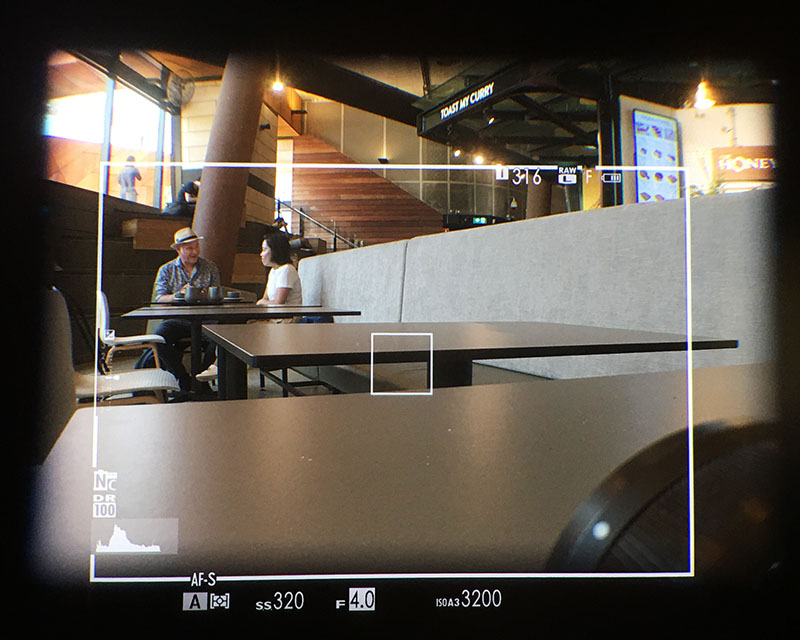
The rangefinder style optical viewfinder in the X-Pro 3.
Unlike the optical viewfinders on DSLRs which are located in the middle and which limits us to what the mirror in the camera body reflects, the viewfinder on the X-Pro 3 gives us a view through a window on the top left of the camera. This location gives us a literal view of the world in front of us. Within this view is a frame circumscribing the field of view provided by the focal length of the lens used. Longer lenses will create a smaller frame within the OVF since you are capturing a smaller part of the scene (in order to magnify it). Wider lenses may make the frame disappear as the field of view they provide exceeds that available in the OVF. In using the X-Pro 3, I found that shooting at 23mm, 35mm and 50mm worked beautifully with the OVF.
Being able to see the wider scene in the OVF as well as the frame showing what the camera will capture brings new levels of effectiveness and efficiency to framing and composition. Because you can now see what’s outside the frame as well as inside it, you can more intuitively and effectively make decisions in terms of your composition. This OVF also allows you to keep track of events outside the frame so that you can time your shot perfectly for when they occur inside the frame.
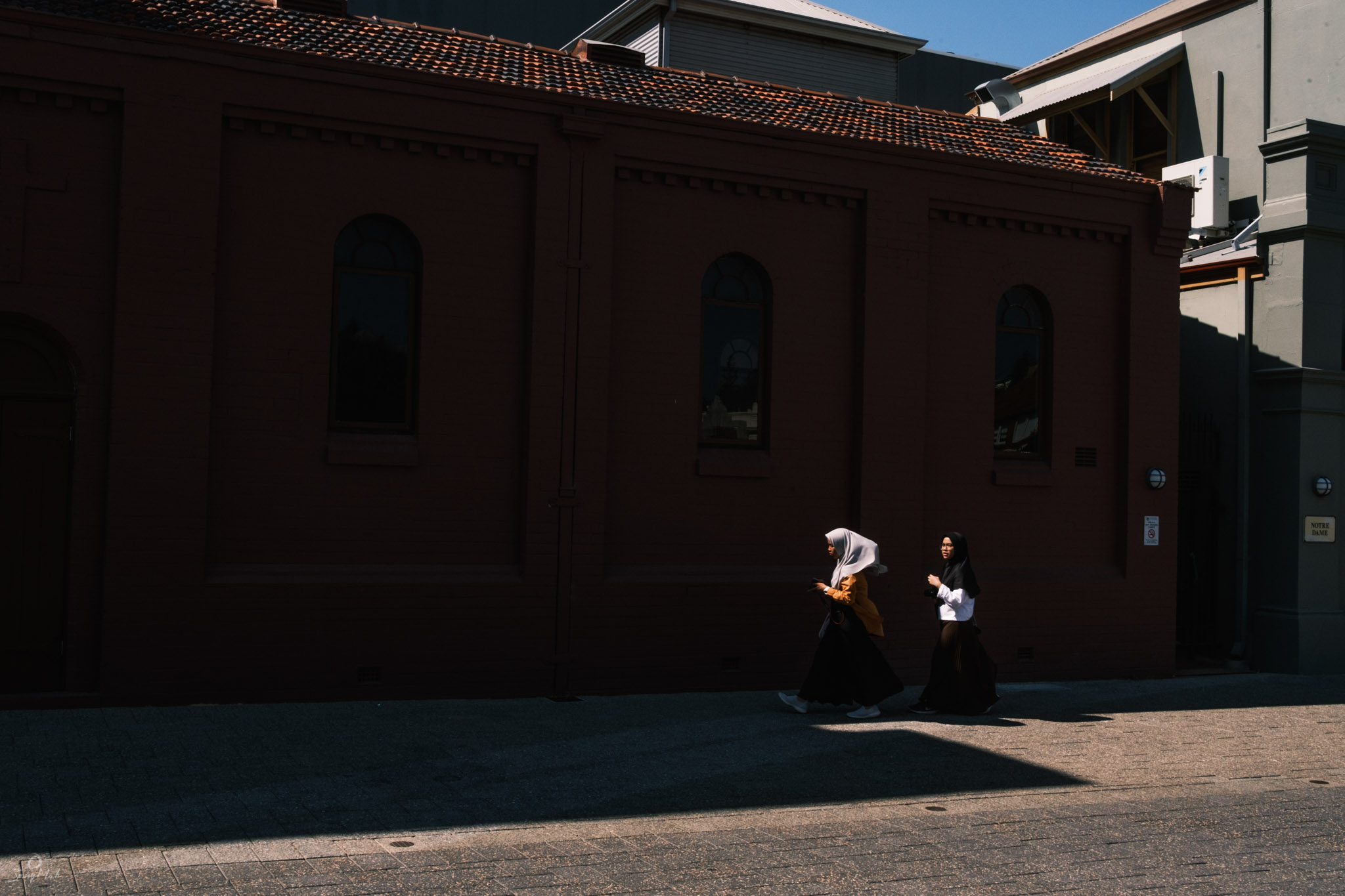
Fujifilm X-Pro 3, 23mm f/2 Fujinon lens, Classic Neg film simulation.
I’m new to the use of the rangefinder style OVF, so it took some getting used to – but once grasped, it made for photography and composition that was so much more intuitive and on point. No longer do you need to keep an eye out for distracting elements in the scene while you frame, because you can now see and identify these elements and compose to keep them out of the frame.
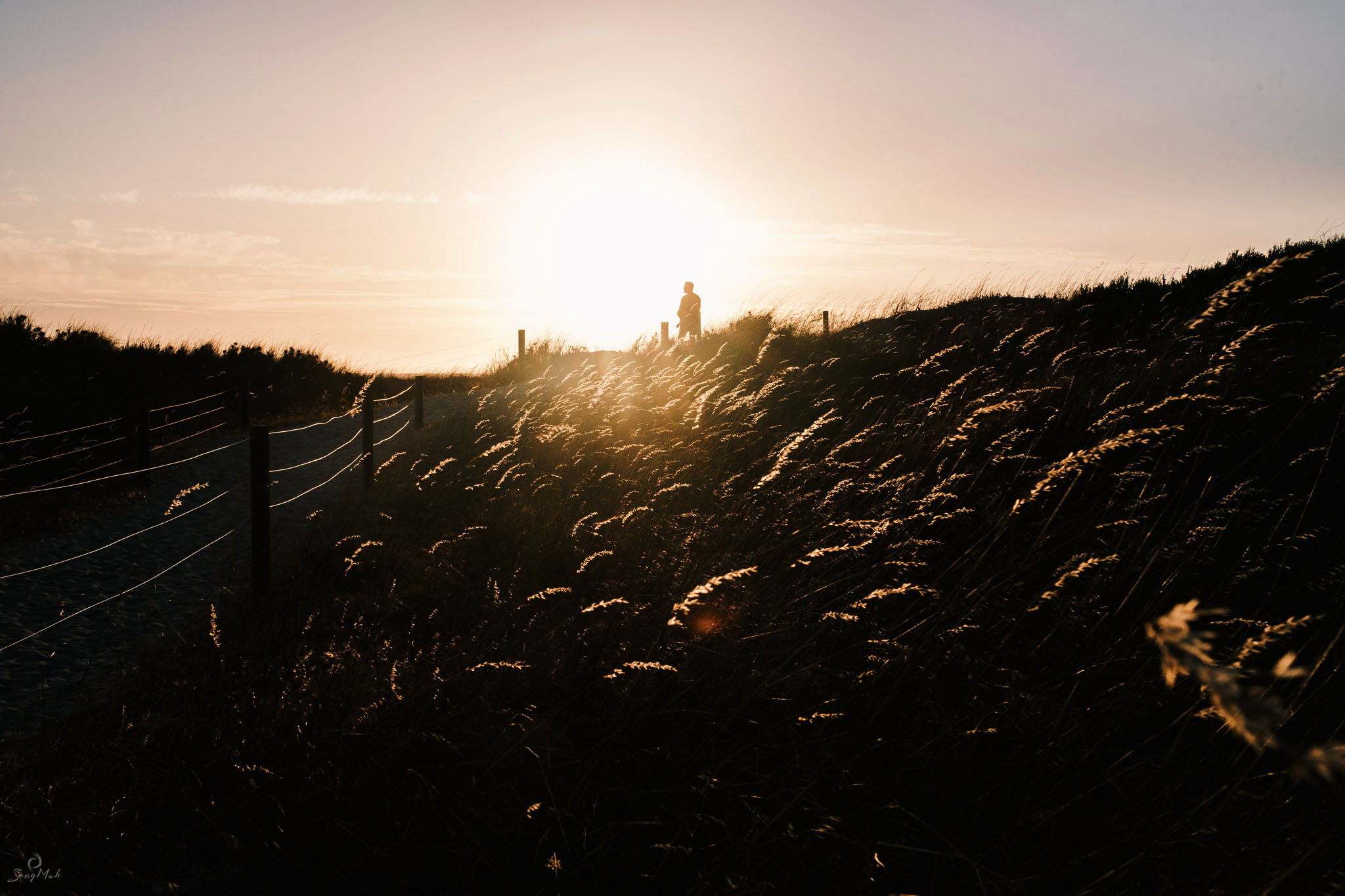
Fujifilm X-Pro 3, 16-55mm f/2.8 Fujinon lens, Classic Neg film simulation.

Fujifilm X-Pro 3, 23mm f/2 Fujinon lens, Classic Neg film simulation.
The design of the OVF is ideal for street or documentary photography; the no-nonsense, no-distractions display keeps your attention focused on the scene, and the frame within the viewfinder helps with rapid, intuitive framing and composition while you shoot. It allows you to fix your attention on the subject and to shoot directly from the heart. Everything in the build of the camera seems to have designed for this purpose – the position of the joystick lets you position the focus area quickly and easily, and the location of the classic dials, Q button and custom function buttons gives you easy access to everything you need within reach of your thumb or index finger. This is a camera that fits like a glove in your hand and is so well balanced that it almost feels like an extension of yourself.
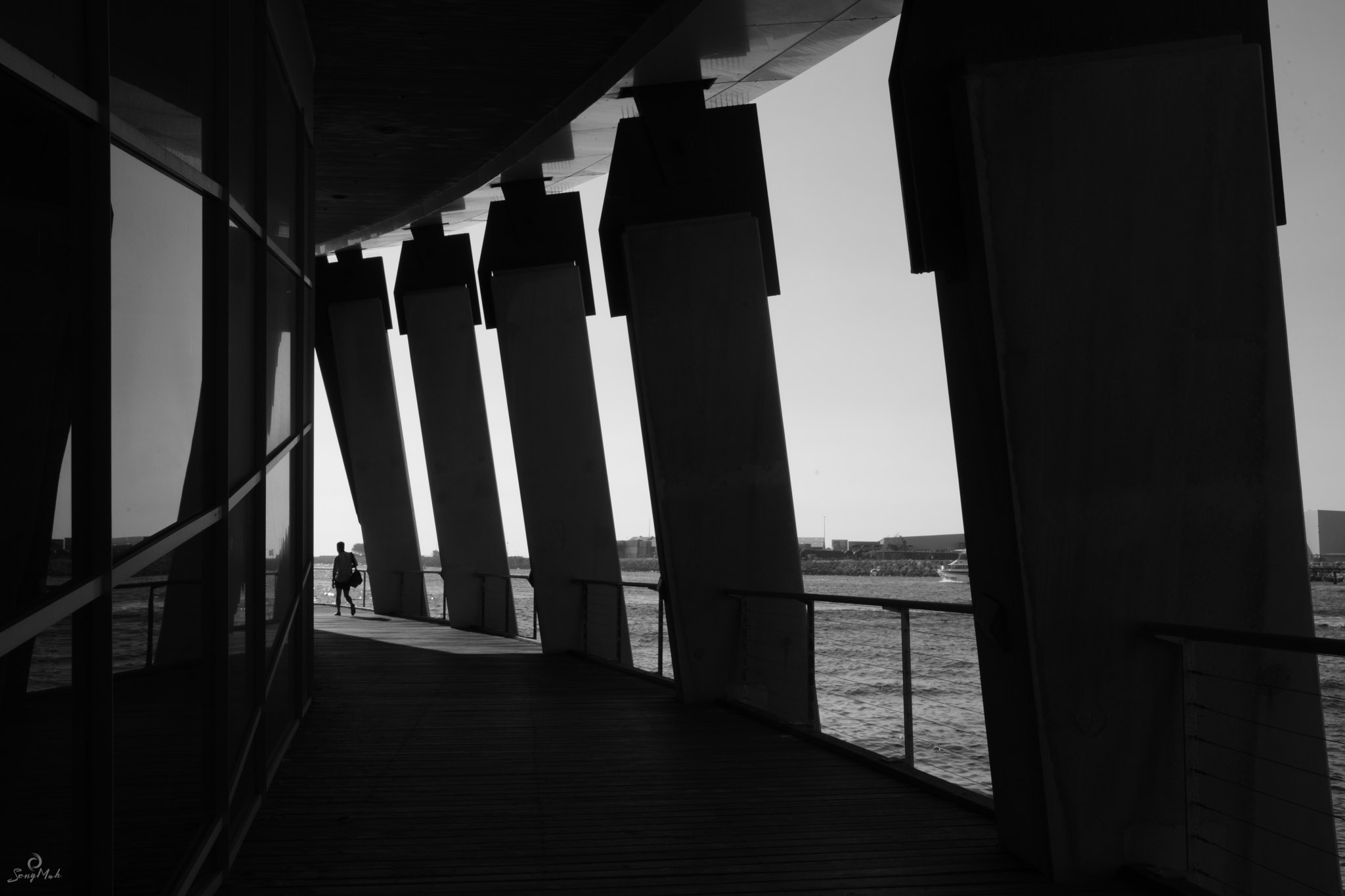
Fujifilm X-Pro 3, 23mm f/2 Fujinon lens, Acros + Red film simulation.
The X-Pro 3 features a bevy of options when it comes to continuous shooting in Drive Mode. Instead of just a standard Low and High Speed Drive, the X-Pro 3 presents a choice 3, 4, 5, 5.7, 8 and 11 frames per second when shooting with the mechanical shutter.
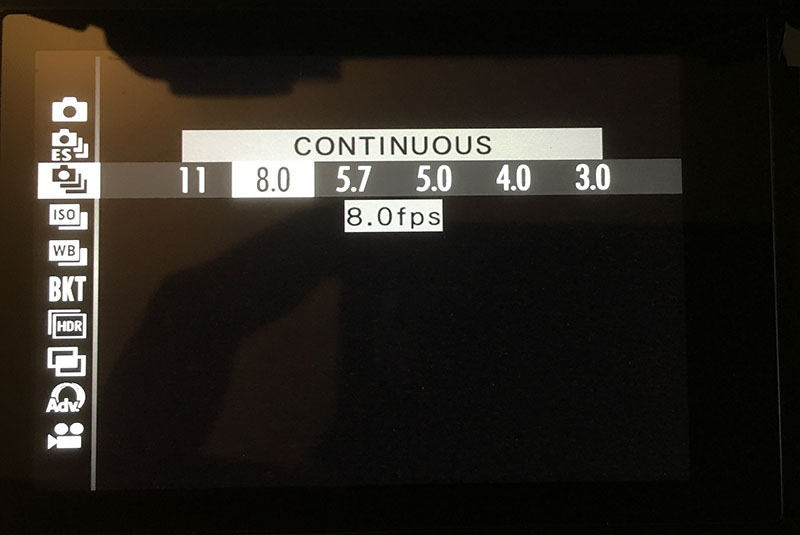
Switch to electronic shutter and your maximum frames per second increases while also offering a crop mode at 1.25x crop while shooting at up to 30 frames per second!
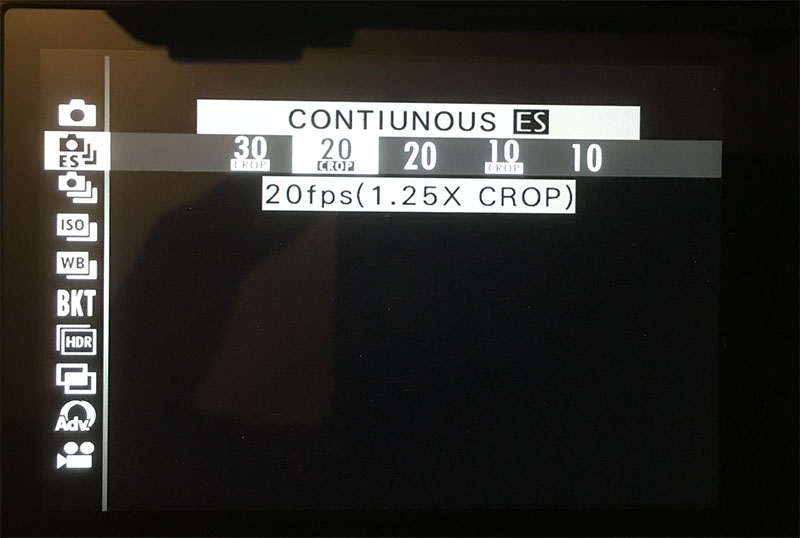
This is a boon to photographers shooting action or wildlife, especially with the in-camera 1.25x crop.
 “
“
Fujifilm X-Pro 3, 100-400mm f/5.6 Fujinon lens, Astia film simulation.
The X-Pro 3 introduces a new film simulation to the stable of simulations available to the Fuji X cameras: Classic Neg, which infuses a classic filmic look to your images. Fuji X users are an unusual bunch in that we love the look of film simulations and will happily shoot in JPEG to get straight out of camera looks with these simulations. Classic Neg extends on the range of old school film looks, creating images that carry a tone and patina that harks back to golden hour hues from slightly faded photographic prints from the 1980s (I may be waxing a bit lyrical here, but it’s the closest description I can provide to give you an idea of the Classic Neg look). There’s certainly a sentimental look that’s evoked by this film simulation.

Fujifilm X-Pro 3, 23mm f/2 Fujinon lens, Classic Neg film simulation.
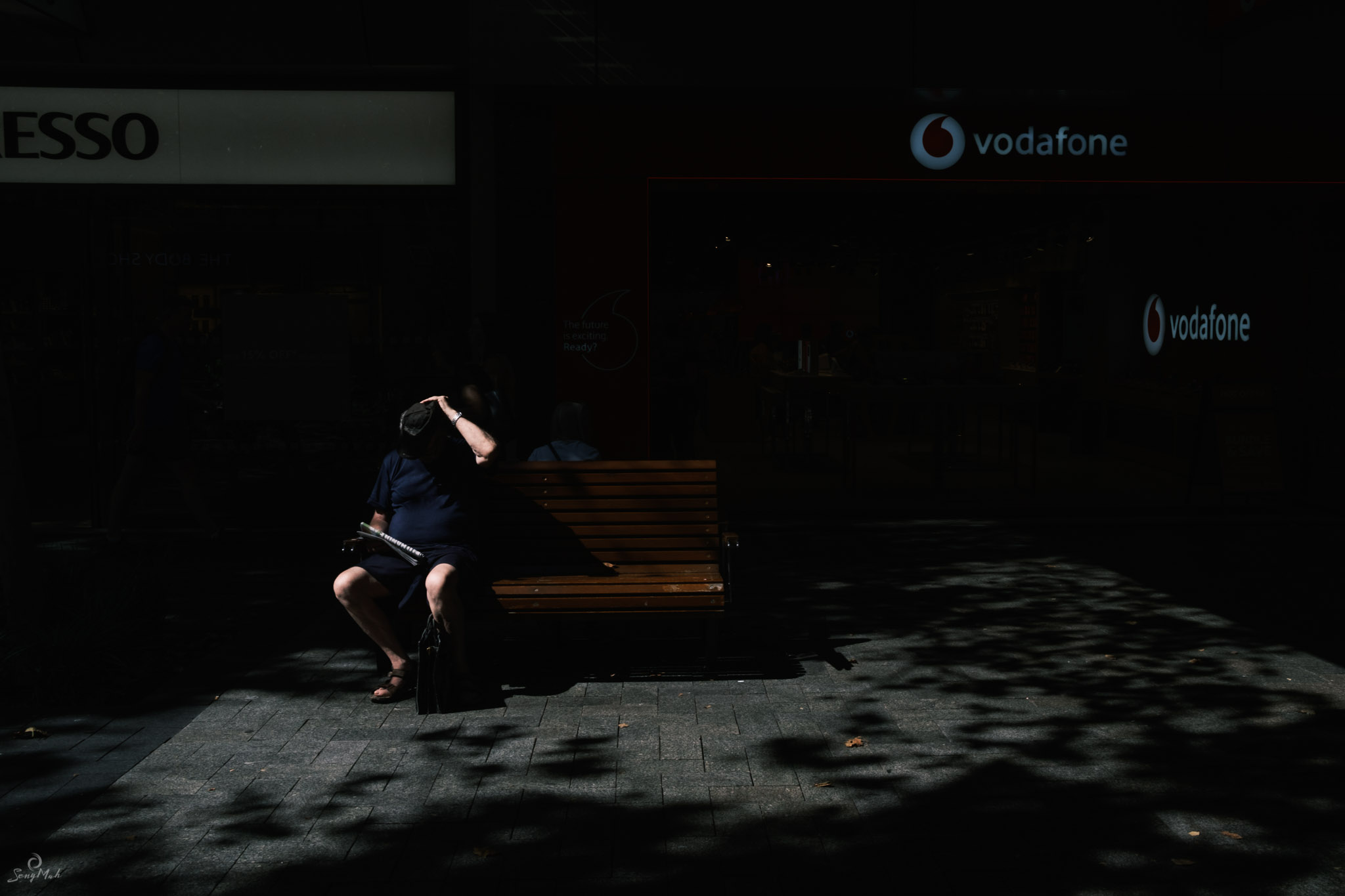 “
“
Fujifilm X-Pro 3, 23mm f/2 Fujinon lens, Classic Neg film simulation.
Finally, and perhaps most controversially, the design of the X-Pro 3 removes the customary back LCD screen, instead hiding it so that you’ll need to flip down the back plate of the camera to view the LCD screen. It’s a bold and unusual decision by Fujifilm and one that’s divided online communities. For me, it’s in keeping with the philosophy that’s informed the design of the camera — hiding the LCD forces us to use the viewfinder, to become more connected with what we are photographing. I’ve always believed that shooting with your eye on the viewfinder gives you greater connection with scene and subject, because it takes away the rest of what you’re able to see in your peripheral vision. So your world, as a photographer, becomes reduced to what’s bounded by the four edges of the frame and nothing more. It creates a psychological link between you and the representation of the world within the rectangle, which takes you further into the “zone” that we photographers often speak about. Using an LCD establishes distance between us and the scene (it’s a little like watching television, or your smartphone screen), and so you’re not as connected as a photographer to what you’re photographing.
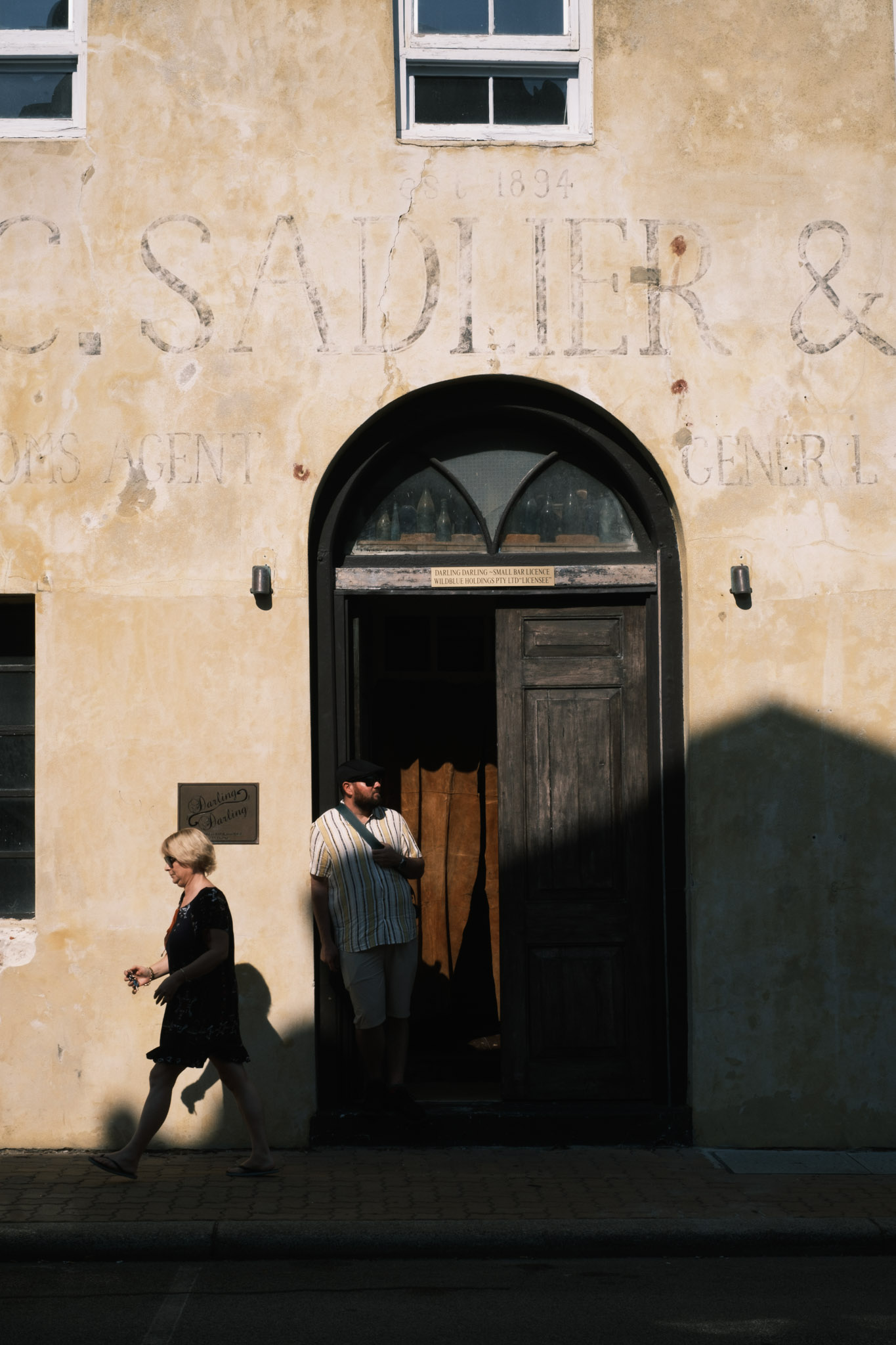 “
“
Fujifilm X-Pro 3, 35mm f/1.4 Fujinon lens, Classic Neg film simulation.
 “
“
Fujifilm X-Pro 3, 16-55mm f/2.8 Fujinon lens, Classic Neg film simulation.
The flip down LCD can also double as a waist-level display (a kind of waist level viewfinder, if you like). In many ways, it’s much faster to flip it down than, say, on the X-T3 (where you’ll need to first pull the LCD plate off the back of the camera, and then push it downwards to give you the same view), which again makes it ideal for a style of shooting commonly found in street and documentary photography.
In lieu of the back LCD, the X-Pro 3 sports a small sub-monitor; by default, it shows the selected film simulation along with information on ISO and battery charge. You can switch this so that the sub-monitor displays your camera settings instead. This sub-monitor, however, is not backlit, so if you’re shooting in dim light, you won’t be able to see the display. If you’re used to shooting with a backlit LCD, this might gall initially, until you come to an understanding that the X-Pro 3 isn’t designed to be like other cameras: it’s design is all about reducing noise and distraction, so that we can get back to the fundamental basics of photography – subject, light, composition and timing.
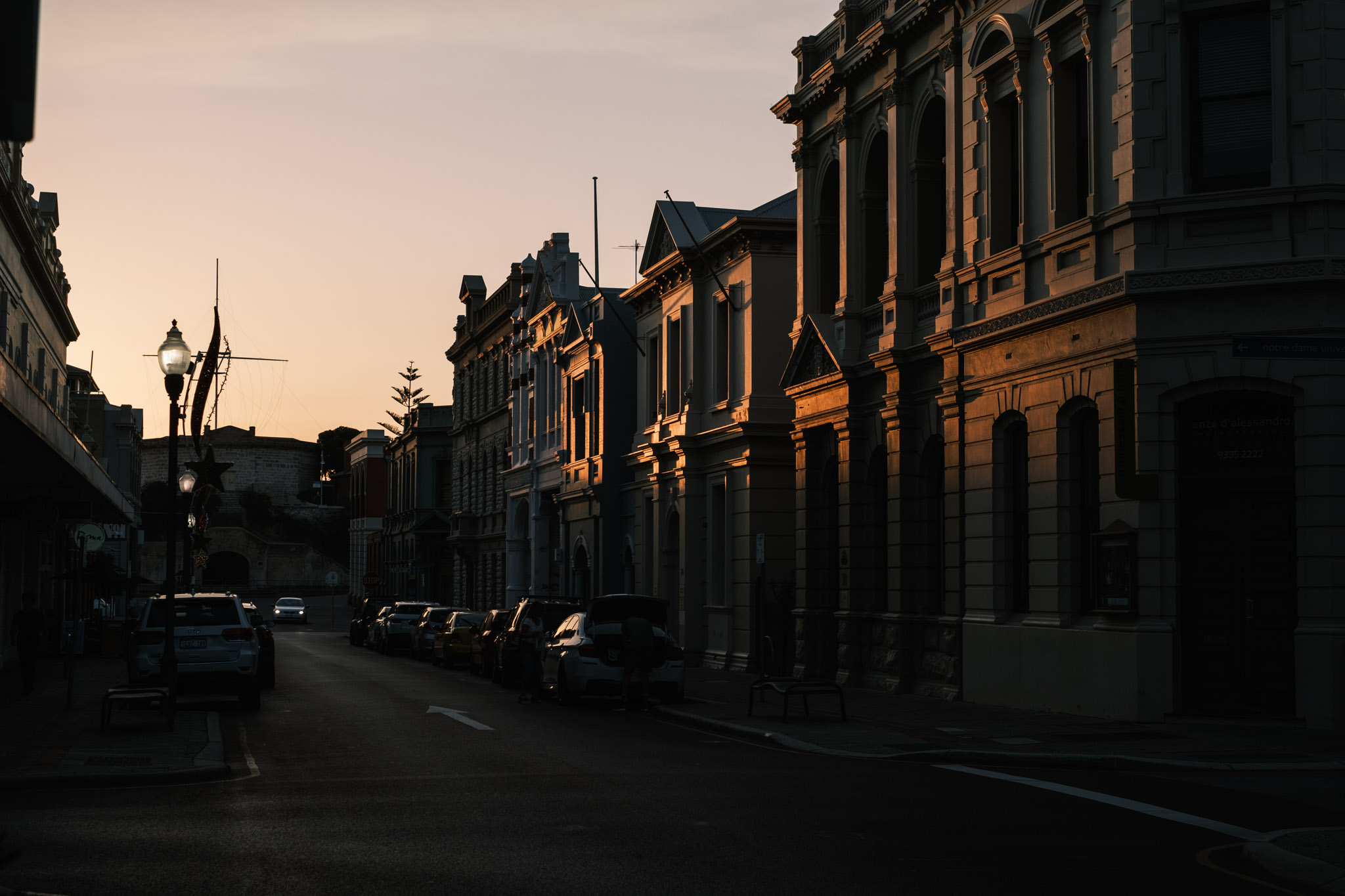
Fujifilm X-Pro 3, 23mm f/2.0 Fujinon lens, Classic Neg film simulation.
There will be some photographers who will find elements of this design frustrating; if you need to check and review your images often, if you need the flexibility of an LCD that can tilt this way and that, if you need to be able to see your chosen settings by glancing at the back of the camera, then the X-Pro 3 may not be the camera for you. Photographers who are looking for greater versatility in deploying the LCD would be better served with the Fujfilm X-T3. In fact, mounting the X-Pro 3 on a tripod and trying to use the LCD can be a little finicky; while an improvement on the X-Pro 2, which did not have a detachable LCD, the flip screen LCD on the X-Pro 3 doesn’t go as far as, say, the X-T3. But I suspect that the X-Pro 3 was never intended to replace the X-T3, instead providing users of the X-Pro 2 (and the X100 series) with an upgrade path and appealing to photographers looking for a compact street and travel camera that works like a dream.
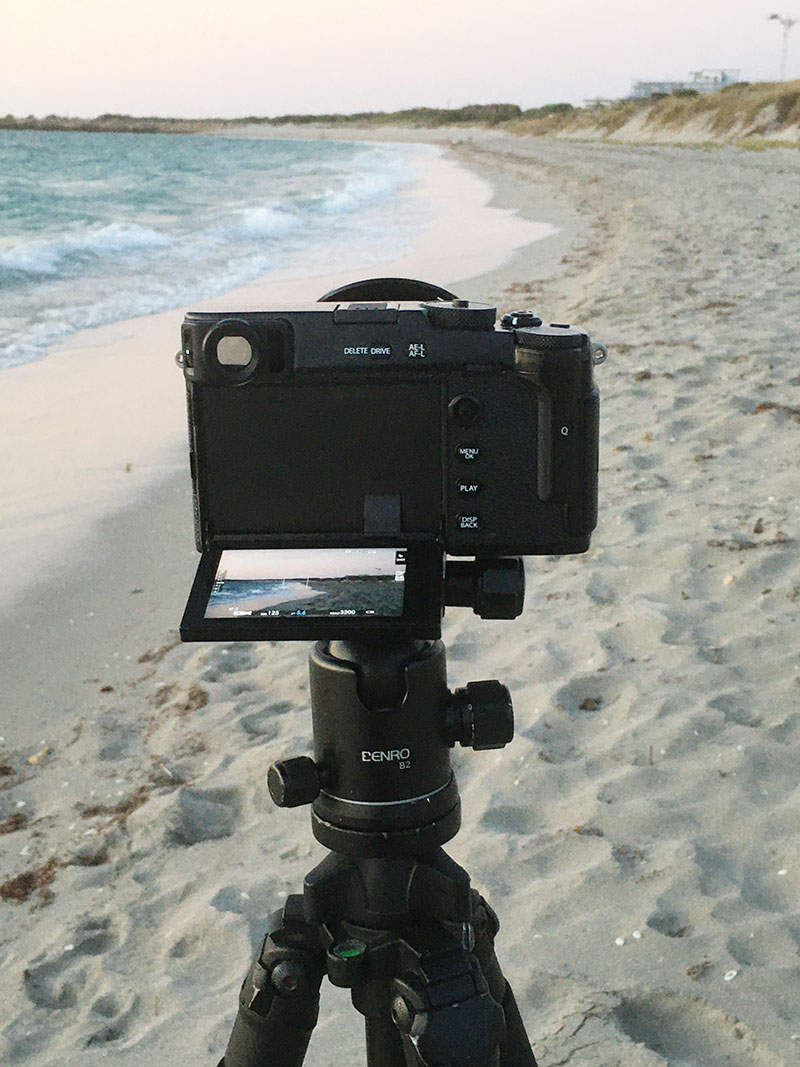

The X-Pro 3 mounted on a tripod.
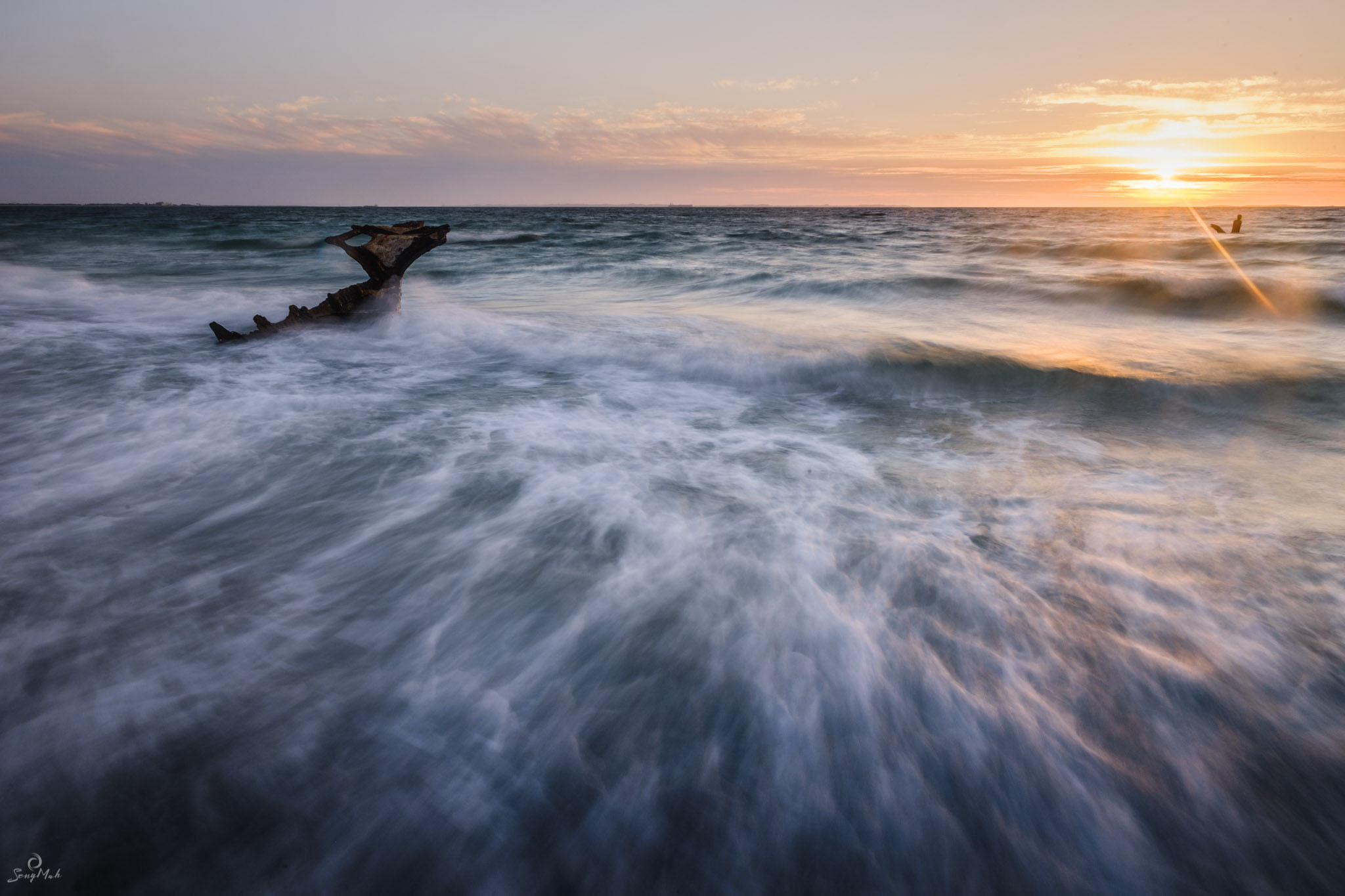
Fujifilm X-Pro 3, 16-55mm f/2.8 Fujinon lens, Astia film simulation.
In terms of its technical guts and image output quality, it’s a close cousin (almost a twin sibling) to the X-T3. Where the X-T3 aims to be almost everything to everyone (and very successfully does this), the X-Pro 3 is all about the niche. It’s a camera for photographers who want to be able to shoot in a way that’s purely and simply about the moment and the experience. It’s a camera that makes you fall in love with photography. And that’s rare praise indeed!
Full disclosure: I was able to use and review the Fujifilm X-Pro 3 thanks to a loan from Fujifilm Australia and Digidirect Cannington. I’m a big fan of the Fujifilm X cameras (I use the X-T2, X-T3 and GFX 50R) and the folk at Digidirect are themselves users of the Fuji X series of cameras and so have great product knowledge on all thing Fujifilm. Pop in if you’d like to give the Fujifilm X-Pro 3 a try before you buy.

No Comments